
Growing up next to Lake Michigan, Samuel Kohlmann was “always interested in nature and ecology.” However, an experience restoring a coral reef in the Caribbean inspired this third year Master of Landscape Architecture student and UBC Sustainability Scholar to pursue a career in coastal adaptation. Samuel finds that landscape architects are “uniquely positioned to weave art, restoration ecology, and human experience together in meaningful, beautiful ways.”
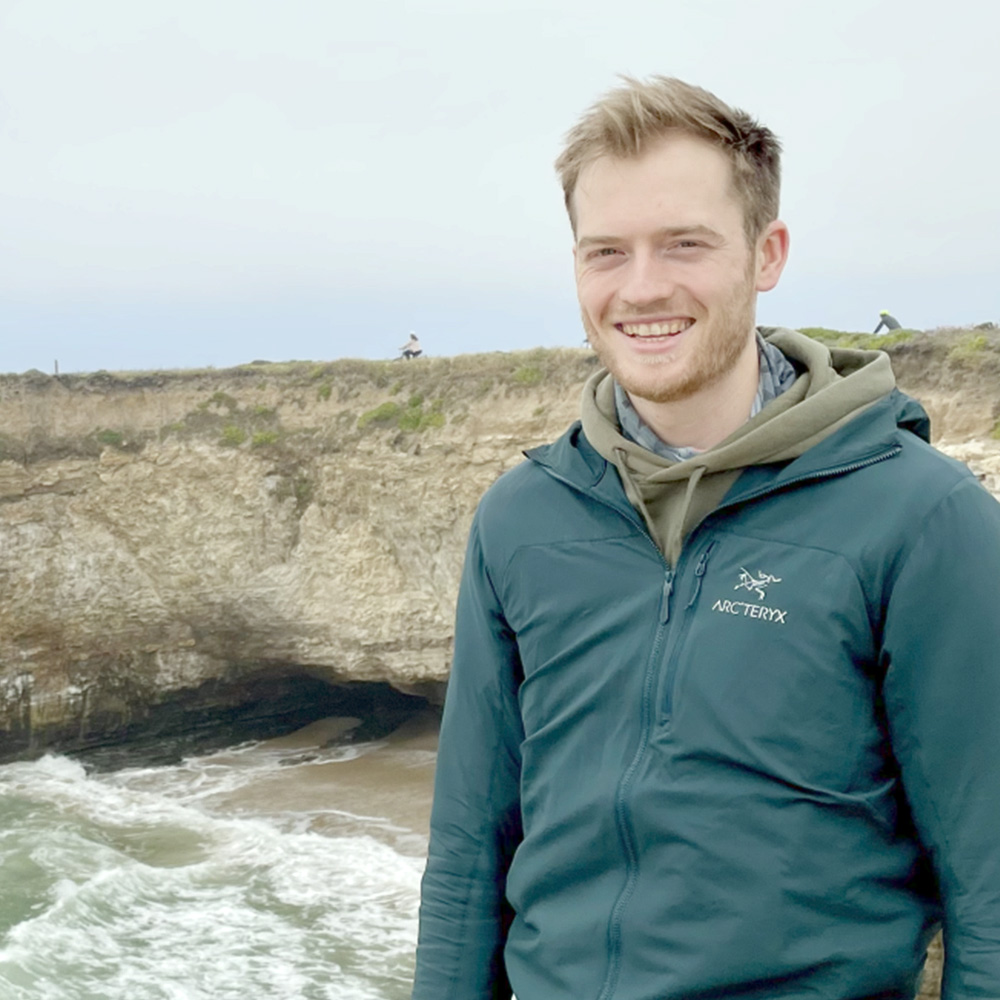
This Sustainability Scholars applied research opportunity caught Samuel’s attention because of his interest in coastal adaptation, and because he had previously visited Maplewood Flats as part of one of his landscape planning and management courses. Samuel was intrigued by the potential to do in-depth site analysis that would directly benefit the decisions made by the steward of Maplewood Flats.
What is Maplewood Flats?
Maplewood Flats is a wild bird sanctuary on the north shore of Burrard Inlet, located on the unceded territory of the səlilwətaɬ Tsleil-Waututh Nation and Coast Salish Peoples. Home to some of the only remaining green coastline in North Vancouver, Maplewood Flats is at risk of inundation from sea level rise and king tides due to its low-lying mudflats, marsh, and forest.
Although currently under the stewardship of the Wild Bird Trust of BC, the organization is in the process of transferring ownership of Maplewood Flats to the Tsleil-Waututh Nation in an effort towards reconciliation, and the two organizations are working to prepare a long-term stewardship plan to protect Maplewood Flats from climate change-related flooding events.
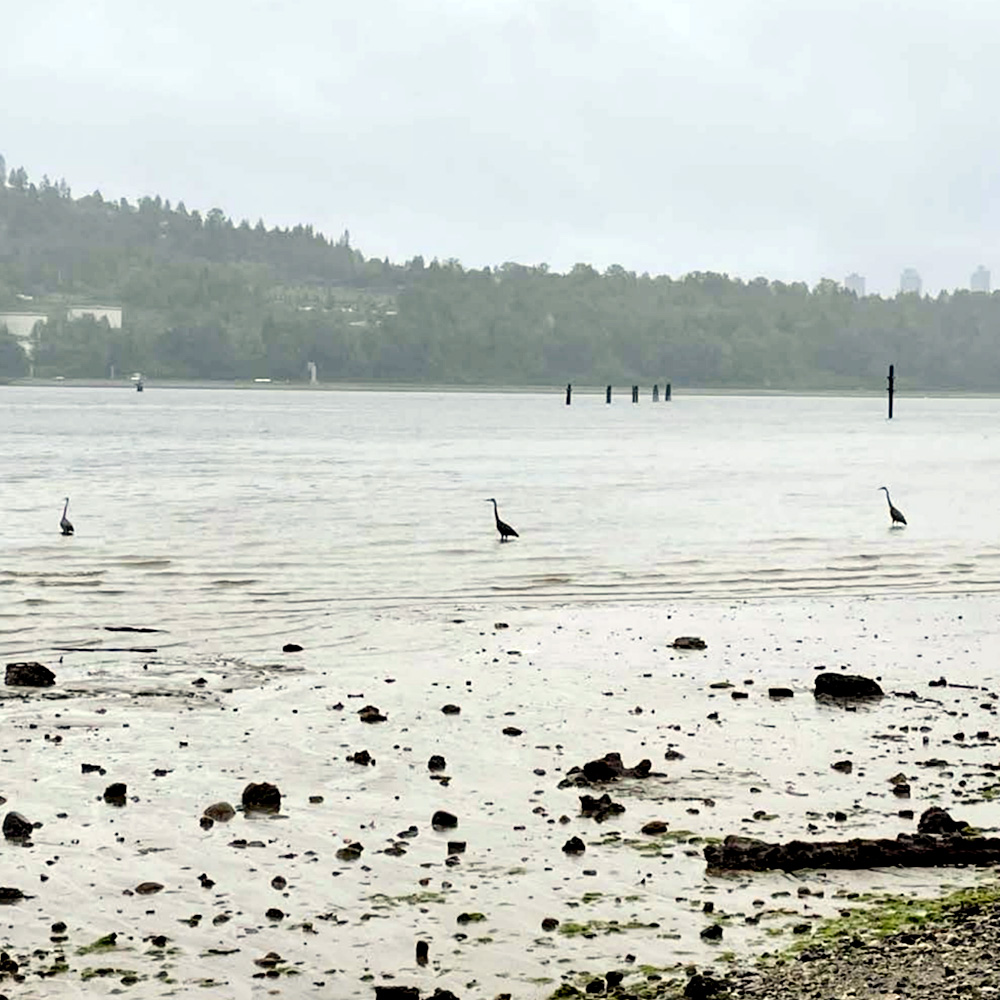
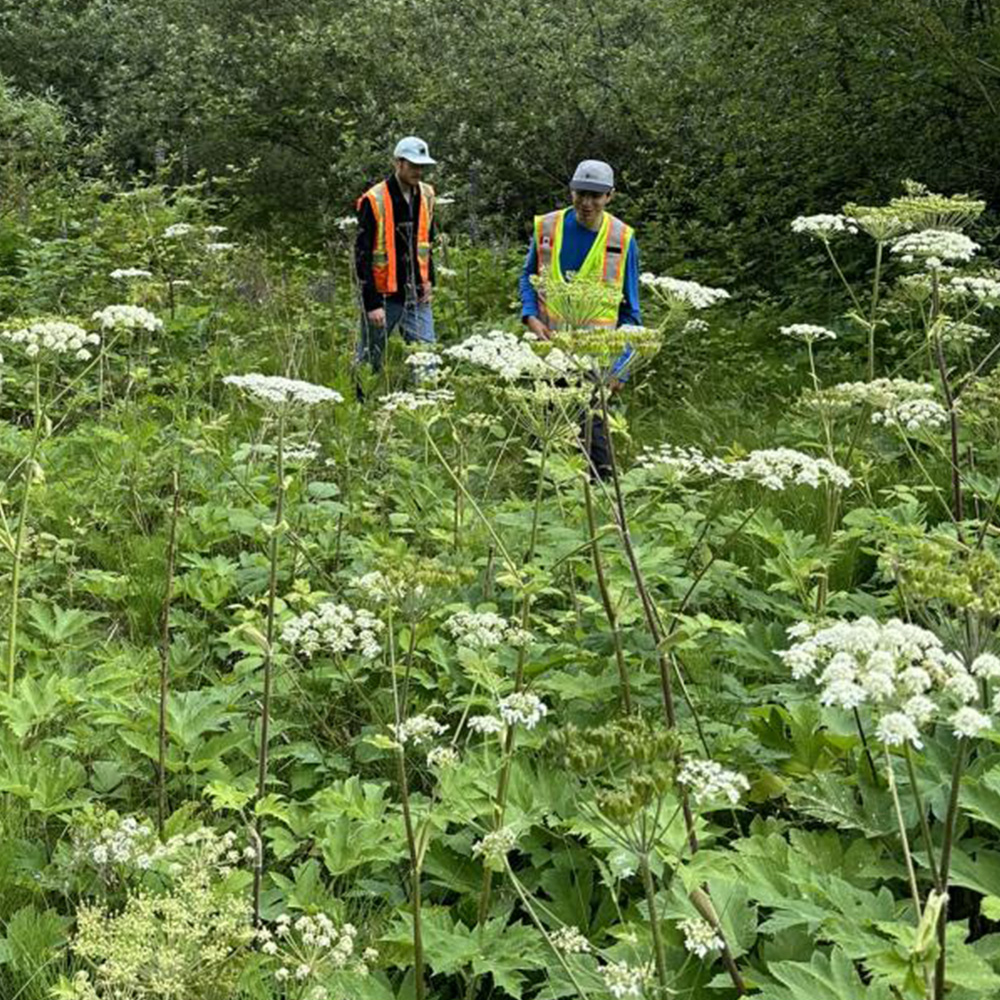
Filling in the gaps: the impact of climate-change related flooding
There are currently knowledge gaps regarding the site’s ecological zones, and how climate change-related flooding will affect these areas. This project helped to fill in those gaps by identifying the various ecosystems and ecological zones of Maplewood Flats that are vulnerable to flooding, as well as the species and plant communities found there. The “ecological zones” were classified by the project team based on “plant population locations, their age, and relevant geographical features,” Kohlmann explains.
A typical day in the field working on this project for Kohlmann involved collaborating with Diego Lozano, another research collaborator, and Benji Eisenberg, the project lead from Living With Water - a research group investigating flood resilience and coastal adaptation in B.C. On field days, the team would identify species present along different 100-meter long transects, “wading through creeks, over fallen trees, and through brambles of blackberries.”
Kohlmann emphasizes the importance of not specifying hard borders to ecosystems; rather, communicating “how they gradually transition from one to the other." Kohlmann notes being surprised by the diversity of ecosystems within a relatively small area, and that he enjoyed learning more about plants through hands-on experience and communicating their findings through graphic representations.
Indigenous reconciliation and long-term stewardship
A key aspect of this project is the transfer of ownership of Maplewood Flats from the Wild Bird Trust of BC to the səlilwətaɬ Tsleil-Waututh Nation (TWN). The two organizations worked together to create a sustainable long-term stewardship plan for the site. Indigenous knowledge was always at the backbone of the project because of the location of Maplewood Flats: on the unceded territory of the TWN, and next to their current reserve land. The Wild Bird Trust also worked to bring TWN members into leadership positions. “The TWN have been and continue to be deeply invested in the care of this site,” Kohlmann explains. “We brought Indigenous knowledge into the research by using hən̓q̓əmin̓əm̓ plant names along with Latin and common names. We also paid attention to the locations of culturally useful plants. Most importantly, this work was directed by and in service to the WBT and their decolonial efforts.”
Benji Eisenberg, co-supervisor of the project, had previously worked with the TWN on the Shoreline Adaptation & Restoration Project. This provided a strong foundation and invaluable insights into “eco-cultural restoration practices, including the identification of invasive plants, propagation of native plants and the importance of eelgrass in marine ecosystems,” which helped shape the scholars’ technical work, ensuring it aligned with TWN’s vision of ecological and cultural stewardship, explains Kees Lokman, landscape architecture professor at UBC SALA and the head of the Living with Water research group.
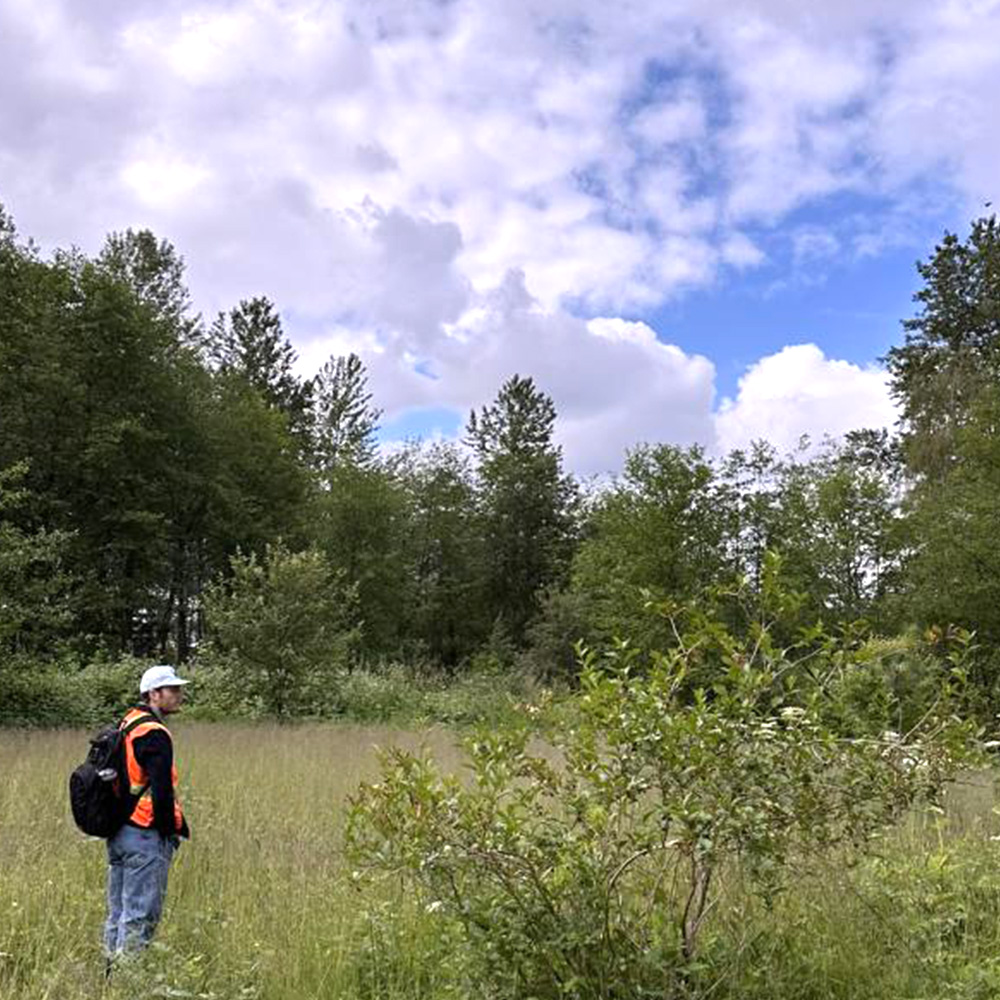
.
“Transferring ownership to the Tsleil-Waututh Nation represents a meaningful step toward reconciliation, aligning conservation efforts with the principles of equity and justice. It recognizes their long-standing relationship with the land and their role as stewards of its ecological and cultural integrity."
"Our project focused on providing capacity and scientific knowledge to support decision-making in the face of climate change, such as the impacts of flooding and sea-level rise on critical habitats within Maplewood Flats. By aligning with the Nation’s priorities and advancing reconciliation efforts, this work highlights how scientific analysis can complement Indigenous leadership, offering a framework for culturally grounded and ecologically informed stewardship.”
– Kees Lokman, Associate Professor,
UBC School of Architecture and Landscape Architecture
.
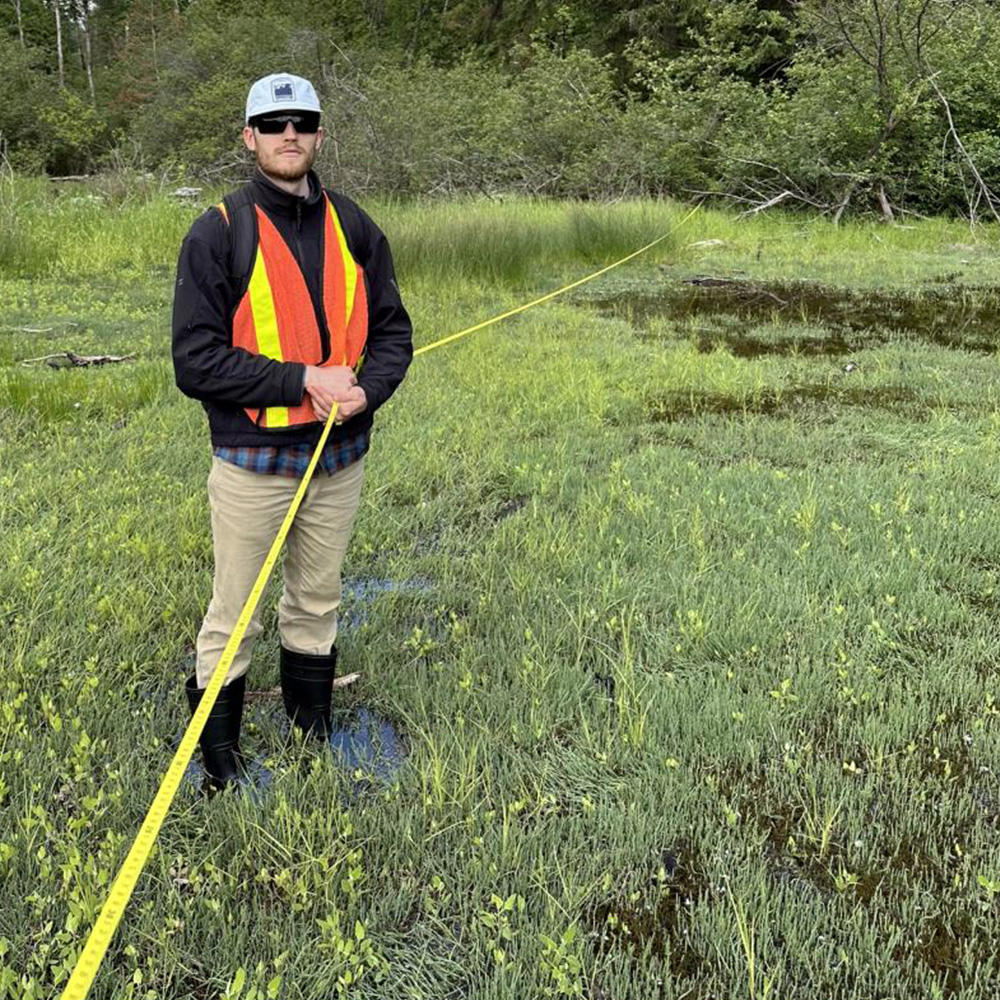
A pathway to success
Kohlmann believes that the Sustainability Scholars program has placed him on an “excellent pathway” academically – his landscape architecture program is a design profession, and so the capstone project is a design project as opposed to a written thesis. By choosing Maplewood Flats as the site for his design project, Kohlmann was able to build on the work he did over the summer to develop a “bold vision for coastal adaptation at the site” and he looks forward to what he can create to positively impact the conversation and planning being done at Maplewood Flats.
Additionally, the Sustainability Scholars program provided opportunities to utilize, “advanced technical expertise in GIS mapping, fieldwork, and species identification, which were instrumental in visualizing potential impacts of sea-level rise and storm surges on local ecosystems,” notes Lokman. The tools allowed the team to anticipate changes in habitat for culturally significant plants, which aligned with the Tsleil-Waututh Nation's local ecological knowledge. Such information can help “inform future decision-making in ways that are both scientifically grounded and culturally relevant.”
Lokman believes that partnerships between academic institutions like UBC and regional organizations, including Indigenous communities, are “vital” when it comes to addressing climate and sustainability challenges. By considering both scientific research and traditional ecological knowledge, such collaborations can develop innovative solutions that are both culturally appropriate and environmentally effective, and partnerships (like this one between UBC and the Wild Bird Trust/TWN) “promote knowledge exchange, capacity building, and the co-creation of strategies that enhance community resilience and ecological health.”
A forward-thinking approach to restoration
Kees Lokman notes that the project “highlighted the complexity of addressing ecological restoration within the context of climate change and sea-level rise.” The various unknowns regarding storm surges, saltwater intrusion, and flooding requires a “forward-thinking approach to restoration” that addresses not only current conditions, but anticipates future site suitability as well. “By foregrounding Indigenous knowledge systems, we gained deeper insights into these interconnections, emphasizing the importance of balancing ecological resilience with cultural continuity,” Lokman reflects.
Lokman also notes that he was surprised by the site’s “remarkable ecological resilience” and the density of unique habitats within a small area, despite decades of habitat disruption, industrial fill, and colonial interventions. “The coexistence of these habitats highlights the importance of maintaining both freshwater and marine ecosystems to sustain cultural and ecological values.”
Lokman reflects that the lessons learned here can be applied to other ecological zones, especially in the importance of foregrounding Indigenous knowledge systems to address ecological restoration in the face of climate change. “By combining field work, visualizations, and predictive modeling with traditional ecological insights, other regions can develop adaptive strategies that respect cultural values and enhance ecological resilience. This approach fosters a holistic understanding of ecosystem dynamics, crucial for effective restoration under changing climatic conditions.”
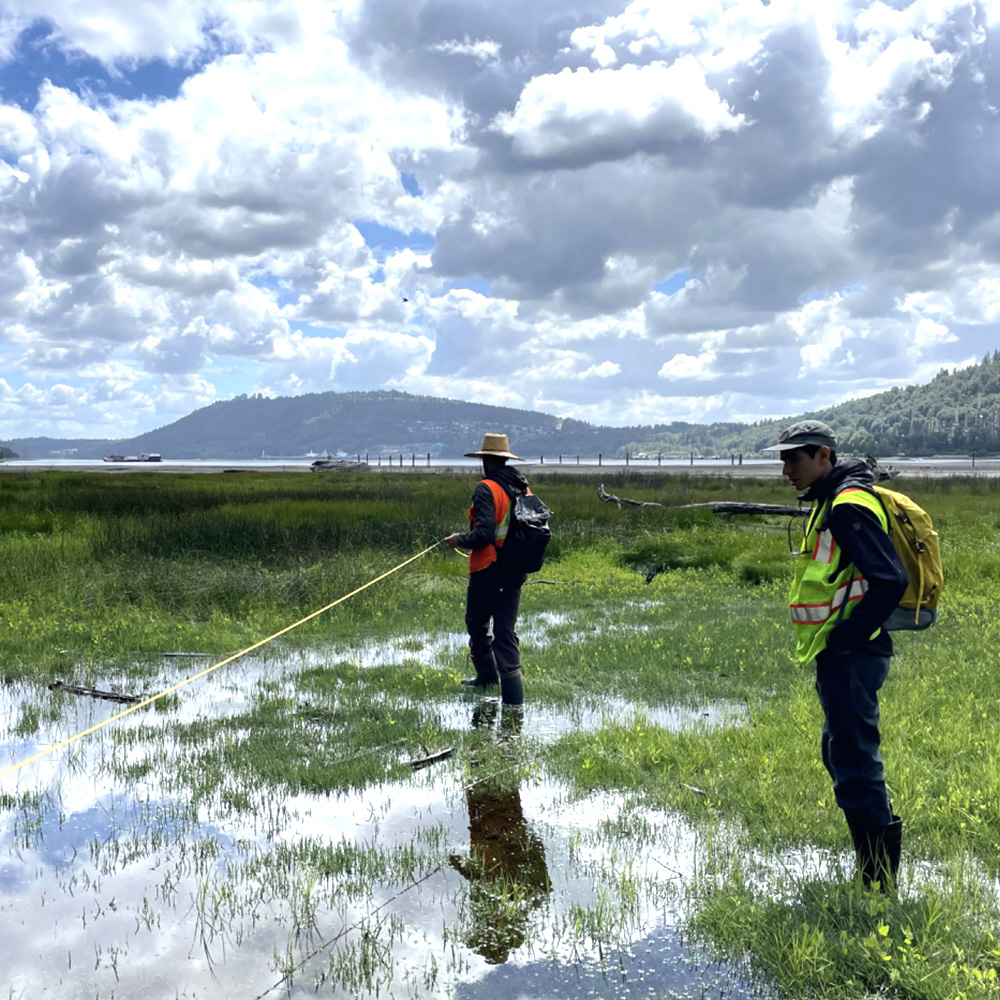
Samuel Kohlmann's report, Mapping Ecological Zones and Species Habitats at Maplewood Flats, was prepared for the Wild Bird Trust of BC and initiated by the Living with Water Project. Read the full report here.
Learn more about the Sustainability Scholars program.
Support the Wild Bird Trust of BC in their mission to "provide wild birds with sanctuary through ecological protection and restoration, and support communities with education, culture, and reconciliation programs."